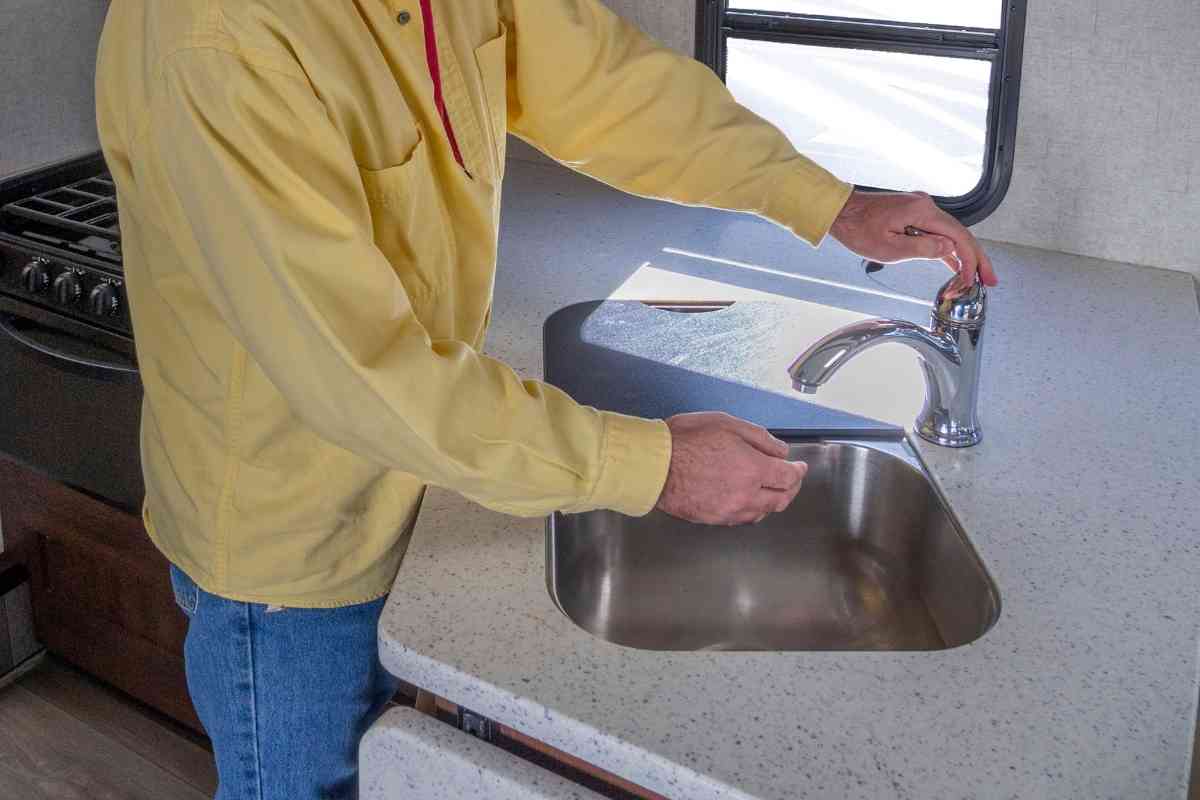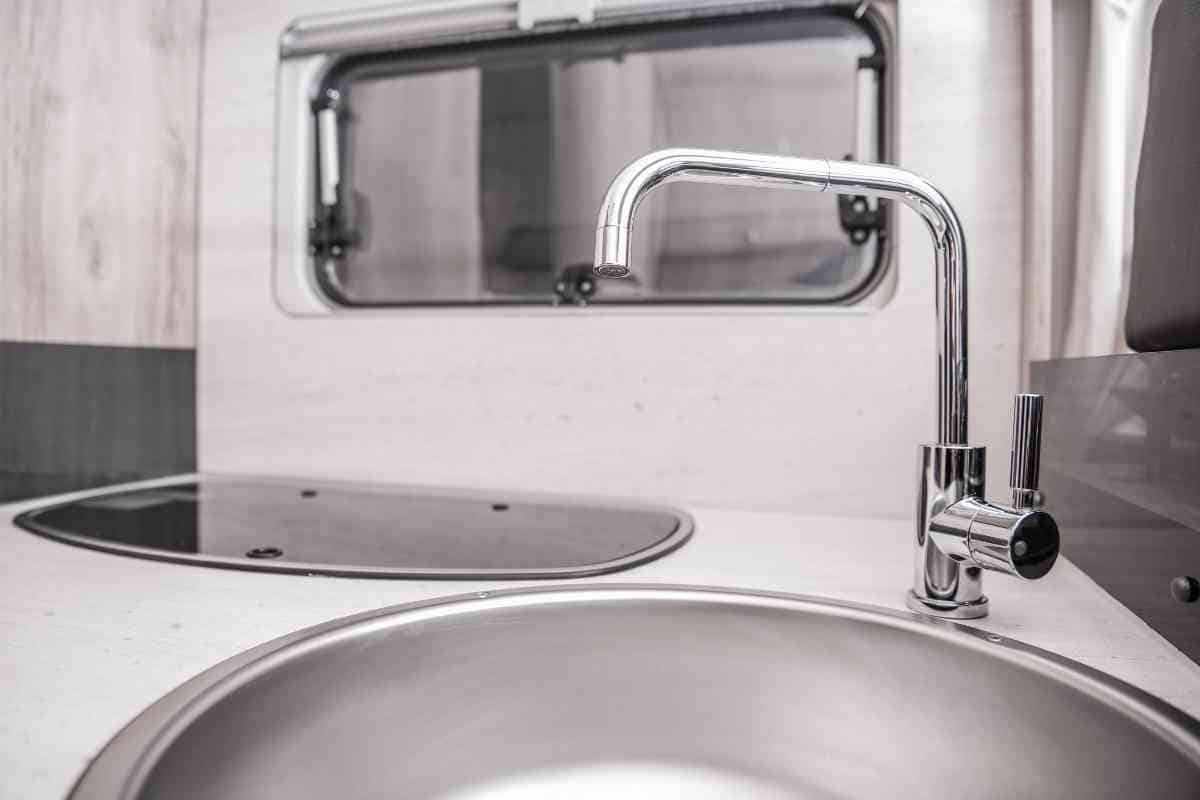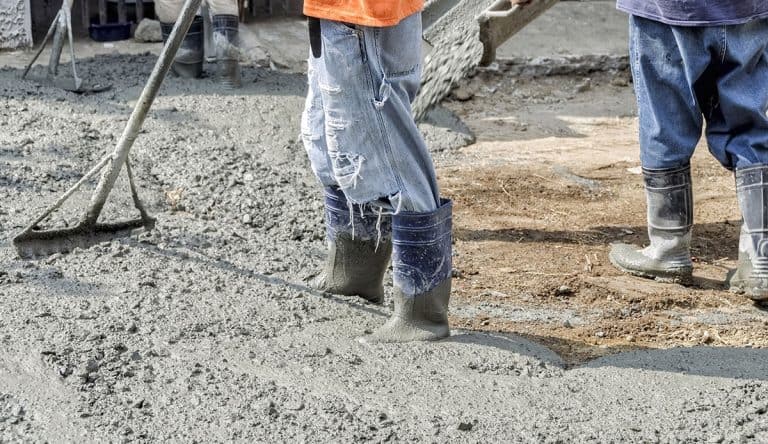7 Reasons Your RV Water Tastes Like Plastic
Water is a necessity of life, and on the road in your RV you need to have a dependable supply. What happens when it tastes like plastic? RV water that takes on a plastic smell is not just a small annoyance; it could be a health hazard. There are several reasons why this might be occurring.

Why Does My RV Water Taste Like Plastic?
Some of the reasons that your RV might taste like plastic include:
- Chemicals leaching from hose material
- Leachates in plastic piping
- Adhesives from pipe fittings
- Contamination of your water tank
- Use of non-food grade hose
- Hot weather
Finding the root cause of a plastic taste in your water supply is easy if you know where to look. We’ll break down some of the potential origins of off-tasting water and how to fix the problem for each.
We’ve consulted fellow RV owners and water quality experts to get to the bottom of off-tasting water.
Why does my water taste like plastic?
There could be several reasons you are experiencing the dreaded “plastic water.” While you could throw a wedge of citrus in your glass and make lemonade out of lemons, drinking plastic-tasting water could prove bad for your health.
Is Drinking Plastic Tasting RV Water Bad For My Health
Plastic compounds leaching into drinking water have known health effects. Plastics are made of polymers, including BPA (Bisphenol A), which is a chemical used extensively in the manufacturing of plastic.
BPA toxicity has been linked to reproductive, immunity, and neurological disorders when absorbed in the human body at high levels. Higher levels of BPA can be found when plastic warms and leaches is exacerbated into your water supply. It is also a likely reason that you are more likely to taste the plastic in your water on a hot day.
What Are The Origins of Plastic Tasting RV Water
There are many reasons that your water could have this less than desirable flavor. Research has determined that HDPE, PEX-a, and PEX-b are the plastic materials most likely to create a plastic taste in water. The plastic taste can come from one or more of several areas in your RV, let’s investigate.
- Check The Source
First and foremost, you should establish that your water is coming from a reliable source.
- Chemicals Leaching From Hose Material
The hoses that are purpose built to serve “safe drinking water” in the RV world are called “white hoses”. If the thin vinyl on these hoses are compromised it can lead to leaching of the inner lining that you taste as it goes into your glass.
The Fix: Invest in a high quality drinking “white hose” for your RV, made of high-quality materials. Good reviews from fellow RV goers are a good place to start. You should also add the sanitation of your white hoses to your RV maintenance schedule.
- Leachates In Plastic Piping
Leachates from plastic piping can also cause off tastes in your RV water supply. If your piping was installed recently, it should be flushed first and left to sit unused for at least 14 days.
The Fix: Sanitize any plastic piping along with hoses as part of a regular maintenance schedule. You can do this by using a baking soda and peroxide mixture to neutralize any off tastes that are in the water system. Then flush thoroughly with fresh water.
- Adhesives From Pipe Fittings
Adhesives in the fittings that are in multiple places across an RV water system can also be the culprits of a plastic taste. This is because the adhesive used in the fittings where small amounts might come into contact with your water supply when the system is newly used. This is because the adhesives haven’t finished a “hardening” stage.
The Fix: Realistically, the taste should dissipate over time. It wouldn’t hurt to also flush the system with baking soda and peroxide followed by fresh water.

- Contamination Of Your Water Tank
RV Water tanks are usually made out of polyethylene (PE). Both hot weather and algae and bacterial blooms inside a tank that has been sitting unmaintained can also exacerbate the leaching of plastic taste from the material.
If it is an algae bloom, it will leave your water supply smelling more like rotten eggs than plastic and could also be hazardous to your health.
The Fix: You’ll need to fully disinfect and then sanitize your water tank. See details in the next section.
- Use Of Non-Food Grade Hose
Many people wonder if they can just swap out a white “drink water” hose for a garden hose. Garden hoses are not manufactured to deliver safe drinking water and should never be used for that purpose. In addition, toxic compounds like lead, which is hazardous to human health, could end up in your drinking water along with bacteria and algae.
They are also more prone to leaching plastic compounds than their drinking water hose counterparts in hot weather.
The Fix: Invest in a purpose built drinking water hose for an RV. They are readily available at RV and camping supply shops.
- Hot Weather
Hot weather is one the most common perpetrators of the plastic taste in RV water. This is especially common in new tanks left out in the hot sun that haven’t had time to flush.
The Fix: Provided the tank is made with food grade materials, empty and sanitizing the tank should free the plastic smell from your water supply.
How do I get the plastic taste out of my RV water tank?
Cleaning your RV tank is a relatively easy maintenance task that should be done on a regular basis whether you are experiencing a plastic taste to your water or not. Algae builds up in another common culprit that can only be kept in check with regular cleaning of your RV water tank.
To clean your RV water tank, follow these steps:
- Turn off the heater
Turn off your RV water heater, and wait for it to cool. Omitting this first step can cause damage to the water heater unit.
- Drain water from your water system.
Open up all valves to drain water from the system. You can optionally use a water pump for this step for ease in draining.
- Check for algae.
If you spot algae at this stage you will need to disinfect before sanitizing. You can do this with a long handled brush and a chlorine solution. Fill the tank with the chlorine solution diluted to product specification and let sit for 24 hours before draining.
- Sanitize.
Now it’s time to sanitize the tank. Add ¾ cup of bleach for every 15 gallons of water to the tank. Fill with water and allow the solution to sit for at least 12 hours.
- Open drains and valves.
Open all drains and valves including sinks and showers to allow the bleach mixture to move through the whole system.
- Pump fresh water through the system.
Circulate water through the system opening all sinks and valves for a solid rinsing until you can no longer smell the bleach.
Don’t forget to also sanitize hoses and water lines. You can do this by soaking them completely in a bucket of diluted bleach solution for at least 2 hours. Then, rinse thoroughly until the bleach smell is gone.
In addition, if you want to try sanitizing your water system without using bleach, there are a few more natural alternatives, albeit less reliable. Hot white vinegar is the cleaner of choice for those who don’t have bleach on hand or don’t want to use it. Baking soda is another alternative.
Either way, it is better safe than sorry to give your system a solid flush if you are in doubt of possible contamination of your water supply.


![Are Poplar Logs Good For Log Cabins? [And Why?!]](https://freedomresidence.com/wp-content/uploads/2022/05/Are-Poplar-Logs-Good-for-Log-Cabins-1-768x512.jpg)


![How Long Do Brita Filters Last? [A Quick Answer!]](https://freedomresidence.com/wp-content/uploads/2022/05/How-Long-Do-Brita-Filters-Last-1-768x512.jpg)

